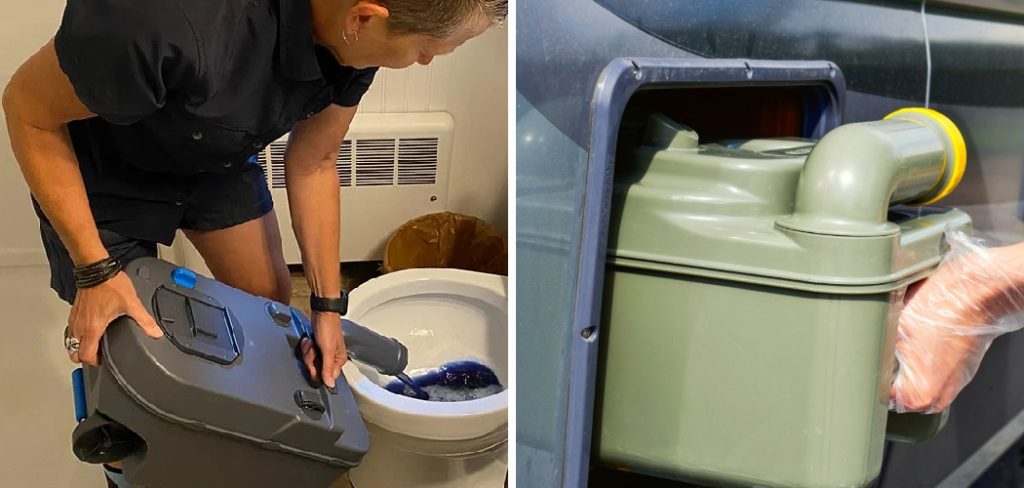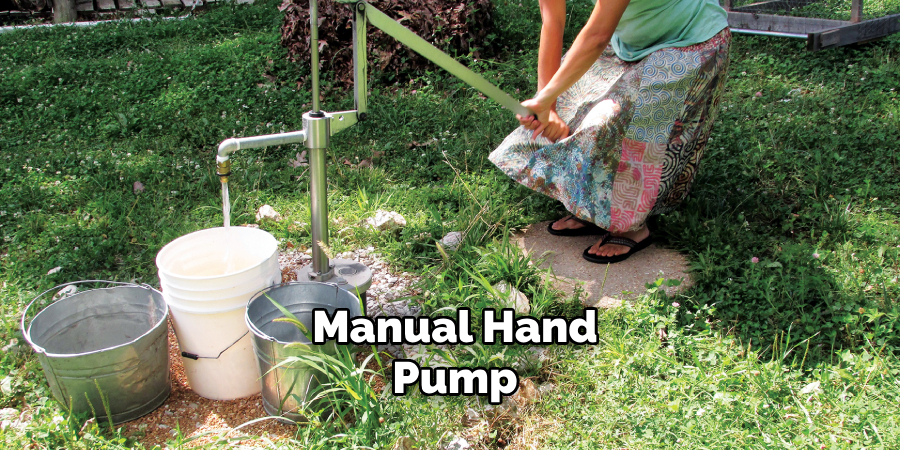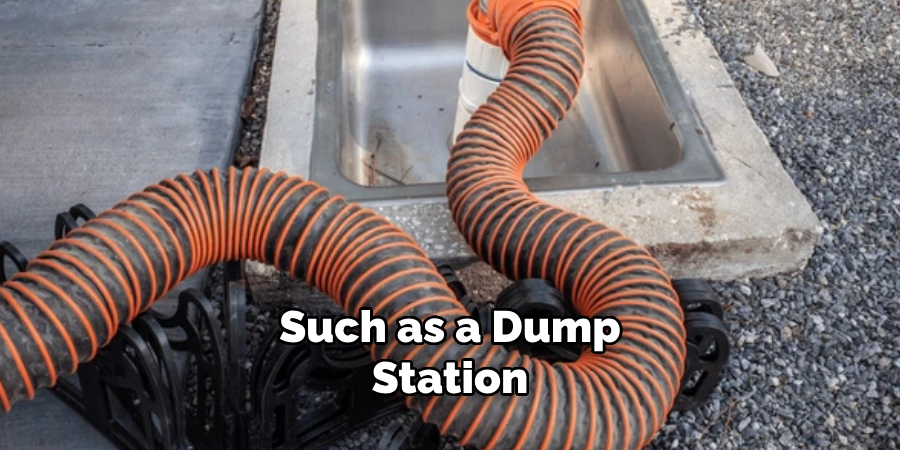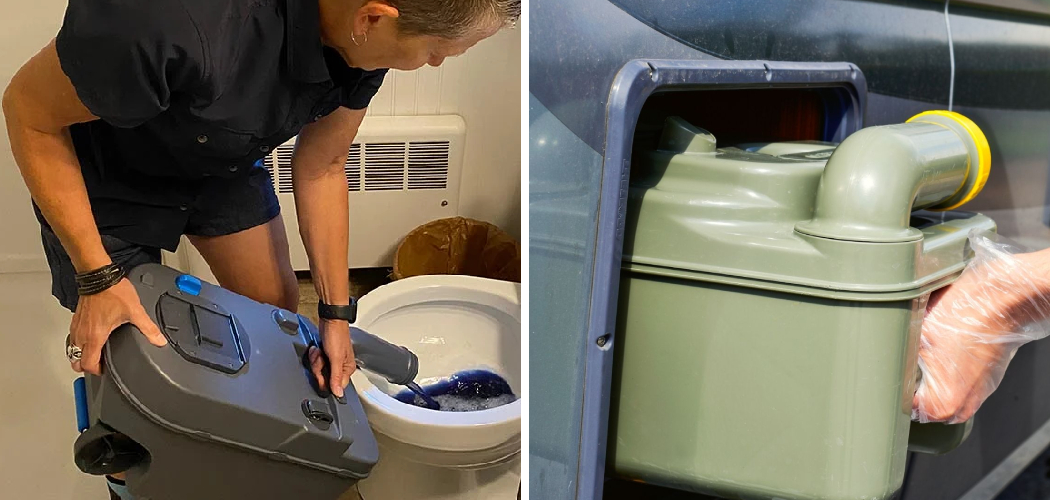A cassette toilet is a compact and versatile sanitation solution commonly found in campervans, RVs, and boats, offering convenience for travelers and adventurers.

Unlike traditional toilets connected to sewage systems, a cassette toilet operates independently by storing waste in a removable cassette located beneath the toilet bowl.
This cassette contains a holding tank where waste is collected and stored until it can be emptied at an appropriate disposal point. The toilet functions similarly to a regular flush toilet, utilizing a water flush mechanism to rinse waste into the cassette.
Cassette toilets are favored for their portability, ease of installation, and efficient use of water and space. Understanding how does a cassette toilet work, including its maintenance and disposal procedures, is essential for anyone considering or already using this type of sanitation system in their mobile living or recreational vehicle.
This article will delve into the mechanics and operation of cassette toilets, providing insights into their functionality and practical usage tips.
Importance of Understanding Cassette Toilet Operation
Comprehending how a cassette toilet operates is crucial for several reasons, particularly for individuals living the van life or rekindling their adventures in RVs and boats. Firstly, proper knowledge ensures that the toilet is used efficiently, preventing common issues such as blockages or unpleasant odors.
This not only extends the lifespan of the toilet but also enhances the comfort and hygiene of the living space. Secondly, understanding the maintenance routine, including regular emptying and cleaning of the cassette, is vital in order to comply with environmental regulations and to avoid sanitation problems.
Being well-informed about the correct disposal methods contributes to eco-friendly practices and safeguards against potential fines or health hazards. Additionally, recognizing the signs of potential mechanical problems can save time and costs associated with repairs.
Ultimately, a thorough understanding of cassette toilet operation leads to a more enjoyable and worry-free experience, allowing travelers to focus on their journeys without the concern of sanitation issues.
Components of a Cassette Toilet
A cassette toilet comprises several essential components that work in unison to ensure its functionality and convenience. The primary components include:

1. Toilet Bowl
The toilet bowl is the part of the cassette toilet that resembles a traditional toilet. It is typically made of durable plastic or ceramic and features a comfortable seat and lid. The bowl is designed to funnel waste into the cassette.
2. Flush Mechanism
The flush mechanism operates similarly to that of a household toilet, utilizing a pump or electric system to flush water around the bowl, ensuring waste is rinsed into the cassette. This mechanism often includes a water reservoir that stores the flushing water.
3. Cassette Holding Tank
The holding tank, or cassette, is a portable and removable container located beneath the toilet bowl. It serves as the storage unit for waste until it can be emptied. The tank is designed with a handle and wheels for easy transportation to a disposal site.
4. Waste Level Indicator
Many cassette toilets are equipped with a waste level indicator, a feature that shows how full the holding tank is. This helps users know when it is time to empty the cassette, preventing overflows and maintaining hygiene.
5. Seals and Valves
Seals and valves play a critical role in the sanitation system of a cassette toilet. They ensure that the holding tank is airtight, preventing leaks and trapping odors within the cassette. The main valve, often called the blade or slide valve, opens and closes to allow waste into the holding tank.
10 Methods How Does a Cassette Toilet Work
1. Toilet Bowl Design and Operation
The toilet bowl of a cassette toilet functions similarly to a traditional household toilet. It includes a seat, a flushing mechanism, and a waste chute that directs waste into the cassette tank below.
Unlike conventional toilets connected to a sewage system, a cassette toilet relies on a portable tank for waste storage. The bowl is typically made of durable plastic or ceramic materials designed to withstand frequent use and facilitate easy cleaning.
2. Flushing Mechanism

Cassette toilets feature a flushing mechanism that operates using either a manual hand pump or an electric pump. The pump draws water from an onboard fresh water tank or an external water source into the toilet bowl. This water is used to rinse the bowl after use, ensuring cleanliness and reducing odors. Manual pumps require the user to press a lever or button multiple times to activate the flushing action, whereas electric pumps provide automated flushing with the push of a button.
3. Waste-Holding Cassette Tank
The key component of a cassette toilet system is the waste-holding cassette tank. This tank is located directly beneath the toilet bowl and serves as a temporary storage unit for human waste and toilet paper. Cassette tanks are typically made of durable plastic and come in various sizes to accommodate different capacities, ranging from 5 to 25 liters or more. They feature a secure sealing mechanism, such as a twist-lock or latch system, to prevent leaks and odors.
4. Waste Disposal Process
After using the toilet, waste and toilet paper are deposited into the toilet bowl. When flushing, the waste and water mixture flows through the waste chute and into the cassette tank below. Gravity and the flushing action help direct the waste into the tank, where it is contained until disposal. Some cassette toilets use chemicals or additives in the cassette tank to break down waste and control odors, enhancing the sanitation process.
5. Chemicals and Additives
To maintain hygiene and control odors, many cassette toilets utilize chemicals or additives in the waste-holding tank. These chemicals serve several purposes: breaking down organic matter, reducing odor formation, and preventing bacterial growth.
Common chemicals used include biocides to kill bacteria, surfactants to aid in waste breakdown, and fragrances to mask odors. The chemical composition and dosage vary depending on the manufacturer and user preferences.
6. Monitoring Waste Levels
Monitoring waste levels in the cassette tank is essential to prevent overfilling and ensure efficient operation of the cassette toilet. Most cassette toilets are equipped with a clear or semi-transparent indicator on the cassette tank, allowing users to visually inspect the waste level.
Additionally, some models feature electronic sensors or indicators on the toilet control panel that display the current fill level of the cassette tank. Regularly checking and emptying the cassette tank when necessary is critical for maintaining hygiene and preventing overflow.
7. Cassette Tank Removal and Emptying
When the cassette tank reaches its capacity or as needed, it must be removed from the toilet for emptying and cleaning. Cassette tanks are designed for easy removal and transportation to a designated waste disposal point, such as a dump station or toilet waste disposal facility.

To remove the cassette tank, unlock the securing mechanism and carefully lift it out from beneath the toilet bowl. Use the integrated carrying handle or strap to transport the cassette tank to the disposal point.
8. Dumping Waste
At the disposal point, empty the contents of the cassette tank into a designated waste receptacle or disposal station. Some facilities provide dedicated dump stations equipped with sewage drains or receptacles specifically designed for cassette toilet waste.
Follow local regulations and guidelines for waste disposal, ensuring proper sanitation and environmental responsibility. Rinse the cassette tank with clean water if available to remove any remaining residue and maintain cleanliness.
9. Cleaning and Maintenance
Regular cleaning and maintenance are crucial for prolonging the lifespan and ensuring the efficiency of a cassette toilet. Clean the toilet bowl, seat, and exterior surfaces with a mild detergent and water solution.

Avoid abrasive cleaners or harsh chemicals that may damage the toilet’s components. Inspect and clean the flushing mechanism, ensuring it operates smoothly and effectively. Periodically sanitize the cassette tank with specialized cleaning products designed for cassette toilets to remove buildup and maintain odor control.
10. Benefits of Cassette Toilets
Cassette toilets offer several advantages over traditional toilets in recreational vehicles and marine vessels. They provide flexibility and independence by eliminating the need for a fixed sewage connection, allowing users to camp or travel in remote locations.
Cassette toilets are compact and space-efficient, making them suitable for small RVs and campervans. They are easy to install and maintain, offering convenience and comfort during outdoor adventures. Additionally, cassette toilets promote environmental sustainability by conserving water and reducing wastewater discharge.
Conclusion
Understanding how a cassette toilet works is essential for effectively using and maintaining this portable sanitation solution.
From the operation of the toilet bowl and flushing mechanism to the function of the waste-holding cassette tank and the use of chemicals and additives, each component plays a vital role in the functionality and hygiene of a cassette toilet.
Monitoring waste levels, proper disposal, and regular cleaning are essential practices to ensure optimal performance and prolong the lifespan of the cassette toilet system. By following these ten comprehensive methods on how does a cassette toilet work, you can confidently utilize and maintain a cassette toilet for a clean and convenient toilet experience in your recreational vehicle or marine vessel.

